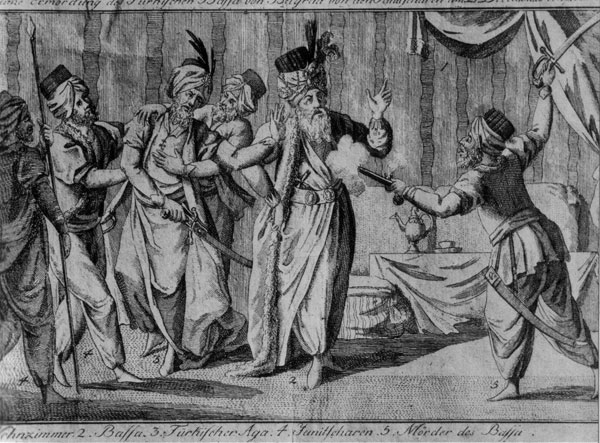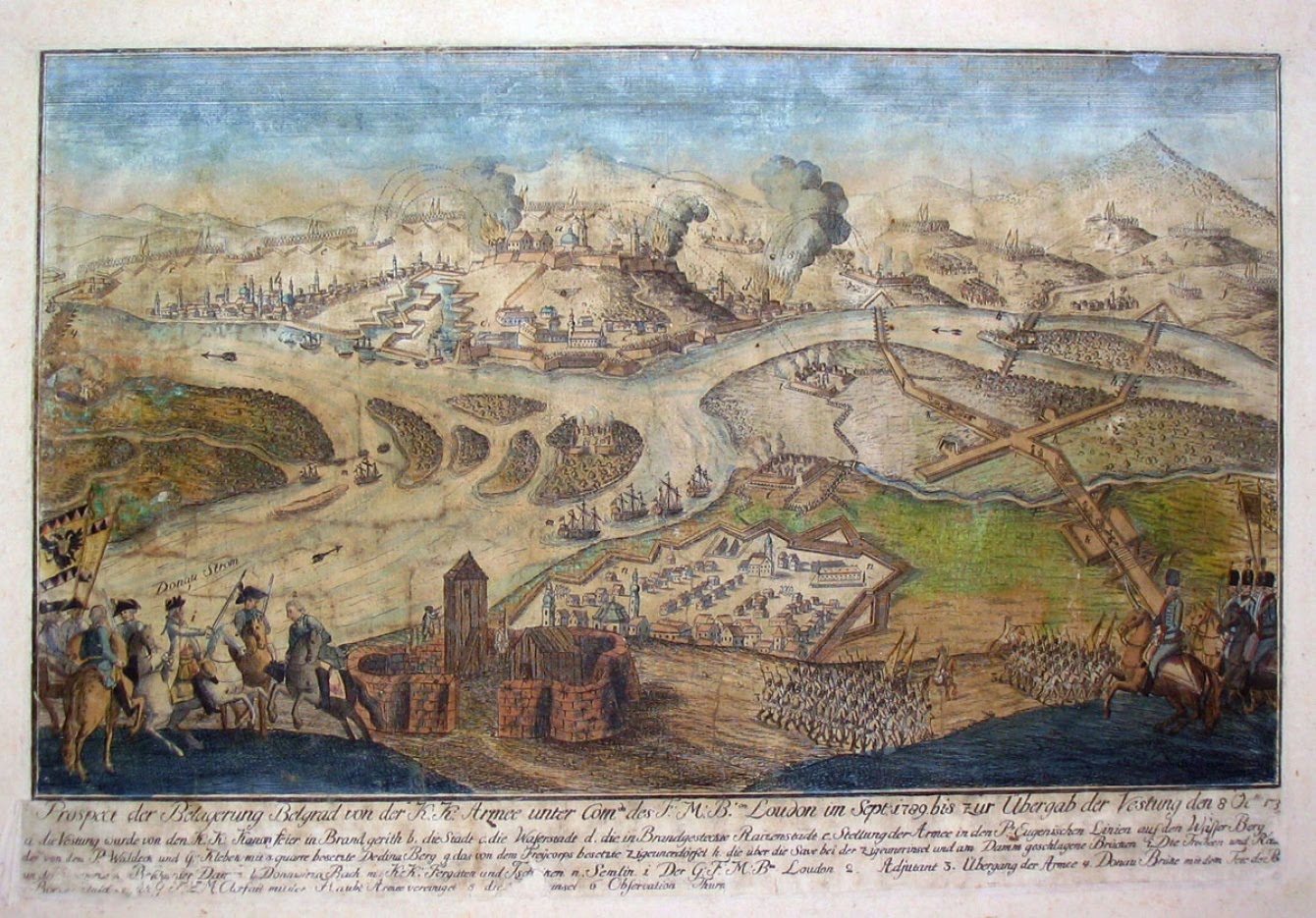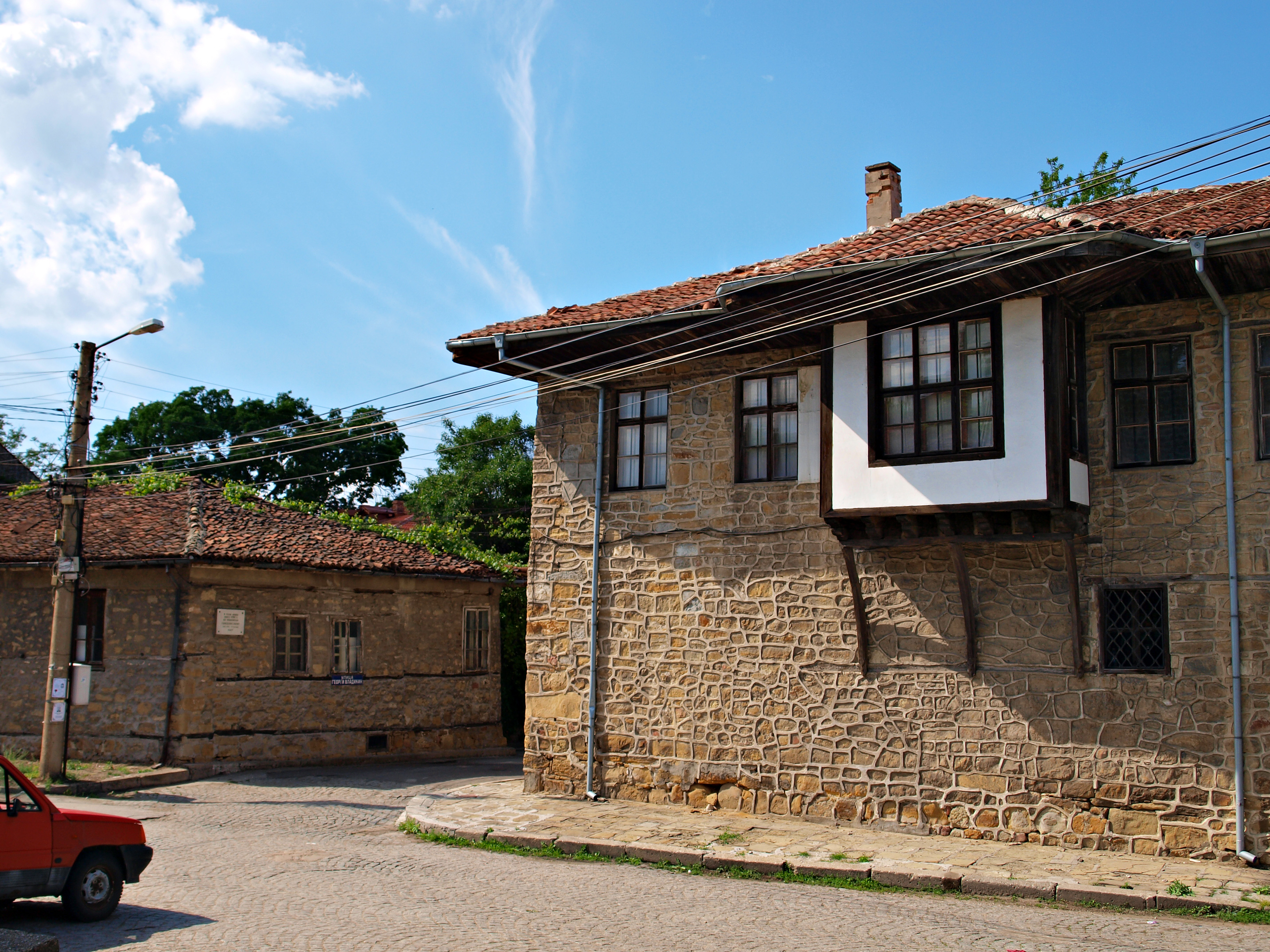|
Dahija
The Dahije ( sr-cyr, Дахије) or Dahijas were the renegade Janissary officers who took power in the Sanjak of Smederevo (also known as the Belgrade Pashaluk), after murdering the Vizier Hadži Mustafa Pasha of Belgrade on 15 December 1801. The four supreme dahije leaders were Kučuk Alija, Aganlija, Mula Jusuf and Mehmed-aga Fočić. Rebels against the Ottoman sultan, they were defeated by the Serbs in the initial phase of the First Serbian Uprising, which is also called "Uprising against the Dahije" (Буна против дахија / ''Buna protiv dahija''). Name The renegade janissary leaders were called ''dahije'', from Ottoman Turkish '' dayı'', meaning "uncle". The lesser janissary commanders were called ''kabadahije'' (s. ''kabadahija''), referring to the Turkish phrase "kabadayı", a colloquial phrase for bullies. Background In 1788, during the Austro-Turkish War (1787–1791), Koča's frontier rebellion saw eastern Šumadija occupied by Austrian Serbian Free Co ... [...More Info...] [...Related Items...] OR: [Wikipedia] [Google] [Baidu] |
Sanjak Of Smederevo
The Sanjak of Smederevo ( tr, Semendire Sancağı; sr, / ), also known in historiography as the Pashalik of Belgrade ( tr, Belgrad Paşalığı; sr, / ), was an Ottoman Empire, Ottoman administrative unit (sanjak), that existed between the 15th and the outset of the 19th centuries. It was located in the territory of present-day Central Serbia, Serbia. Administration Eyalet belonging The sanjak belonged to Rumelia Eyalet between 1459 and 1541, and again between 1716 and 1717 and again 1739 and 1817 (nominally to 1830), to Budin Eyalet between 1541 and 1686, and to Temeșvar Eyalet between 1686 and 1688 and again between 1690 and 1716. Borders During the governorship of Hadji Mustafa Pasha (1793–1801), the administration was expanded eastwards to include the Kladovo area, until then part of the Sanjak of Vidin. History 15th century The Sanjak of Smederevo was formed after the fall of the Serbian Despotate in 1459, and its administrative seat was Smederevo. Ottoman sources n ... [...More Info...] [...Related Items...] OR: [Wikipedia] [Google] [Baidu] |
Uprising Against The Dahije
The First Serbian Uprising ( sr, Prvi srpski ustanak, italics=yes, sr-Cyrl, Први српски устанак; tr, Birinci Sırp Ayaklanması) was an uprising of Serbs in the Sanjak of Smederevo against the Ottoman Empire from 14 February 1804 to 7 October 1813. Initially a local revolt against renegade janissaries who had seized power through a coup, it evolved into a war for independence (the Serbian Revolution) after more than three centuries of Ottoman rule and short-lasting Austrian occupations. The janissary commanders murdered the Ottoman Vizier in 1801 and occupied the sanjak, ruling it independently from the Ottoman Sultan. Tyranny ensued; the janissaries suspended the rights granted to Serbs by the Sultan earlier, increased taxes, and imposed forced labor, among other things. In 1804 the janissaries feared that the Sultan would use the Serbs against them, so they murdered many Serbian chiefs. Enraged, an assembly chose Karađorđe as leader of the uprising, and ... [...More Info...] [...Related Items...] OR: [Wikipedia] [Google] [Baidu] |
First Serbian Uprising
The First Serbian Uprising ( sr, Prvi srpski ustanak, italics=yes, sr-Cyrl, Први српски устанак; tr, Birinci Sırp Ayaklanması) was an uprising of Serbs in the Sanjak of Smederevo against the Ottoman Empire from 14 February 1804 to 7 October 1813. Initially a local revolt against Dahije, renegade janissaries who had seized power through a coup, it evolved into a revolution, war for independence (the Serbian Revolution) after more than three centuries of Ottoman rule and short-lasting Austrian occupations. The janissary commanders murdered the Ottoman Vizier in 1801 and occupied the sanjak, ruling it independently from the Ottoman Sultan. Tyranny ensued; the janissaries suspended the rights granted to Serbs by the Sultan earlier, increased taxes, and imposed forced labor, among other things. In 1804 the janissaries feared that the Sultan would use the Serbs against them, so they Slaughter of the Knezes, murdered many Serbian chiefs. Enraged, an assembly chose Ka ... [...More Info...] [...Related Items...] OR: [Wikipedia] [Google] [Baidu] |
Slaughter Of The Knezes
The Slaughter of the Knezes ( sr, Сеча кнезова, Seča knezova) was the organized assassinations and assaults of noble Serbs in the Sanjak of Smederevo in January 1804 by the rebellious Dahije. Fearing that the Sultan would make use of the Serbs to oust them, they decided to execute leading Serbs throughout the Sanjak. A total of 72 noble Serbs were assassinated, and their heads were put on public display. Notable victims were Aleksa Nenadović and Ilija Birčanin. The event triggered the Serbian revolution, aimed at putting an end to the centuries of occupation. Background In 1788, Koča's frontier rebellion saw most of Šumadija occupied by the Serbian Free Corps, a volunteer militia loyal to the Austrians. Belgrade was besieged by Austrian forces in late 1789, occupied until 1791 when it was handed back to the Caliphate after concluding peace. In 1793 and 1796 Sultan Selim III proclaimed firmans (decrees) which gave more rights to Serbs. Among other things, tax ... [...More Info...] [...Related Items...] OR: [Wikipedia] [Google] [Baidu] |
Serbian Free Corps
The Serbian Free Corps (german: Serbische Freikorps), known simply as ''frajkori'' ( sr-cyr, фрајкори), was a volunteer militia composed of ethnic Serbs, established by the Habsburg monarchy, to fight the Ottoman Empire during the Austro-Turkish War (1787–1791). The conflict with Turkish forces ultimately proved inconclusive. The rebellion in the Sanjak of Smederevo and militia's operations resulted in the period of Habsburg-occupied Serbia, which took place from 1788 to 1792. Ultimately, the Serbian volunteer corps had the legacy of promoting the creation of future paramilitaries, such as during the First Serbian Uprising. History A Serbian ''freikorps'' of 5,000 soldiers had been established in Banat (Banat Military Frontier), composed of refugees that had fled earlier conflicts in the Ottoman Empire. The Corps would fight for liberation of Serbia and unification under Habsburg rule. The main commander was the Austrian major Mihajlo Mihaljević. There were several fr ... [...More Info...] [...Related Items...] OR: [Wikipedia] [Google] [Baidu] |
Serbian Hajduks
The Serbian hajduks ( sr, хајдуци / ''hajduci'') were brigands (bandits) and guerrilla freedom fighters ( rebels) throughout Ottoman-held Balkans, mainly in Serbia, organized into bands headed by a ''harambaša'' ("bandit leader"), who descended from the mountains and forests and robbed and attacked the Ottomans. They were often aided by foreign powers, such as the Republic of Venice and Habsburg monarchy, during greater conflicts. The hajduks are seen as part of the Serbian national identity. In stories, the hajduks were described as heroes; they had played the role of the Serbian elite during Ottoman rule, they had defended the Serbs against Ottoman oppression, and prepared for the national liberation and contributed to it in the Serbian Revolution. The Chetniks also saw themselves as hajduks, freedom fighters. The hajduk movement is known as hajdučija (хајдучија) or hajdukovanje (хајдуковање). Ranks included ''buljubaša'' and ''harambaša'', adop ... [...More Info...] [...Related Items...] OR: [Wikipedia] [Google] [Baidu] |
Habsburg-occupied Serbia (1788–92)
{{disambiguation ...
Habsburg Serbia may refer to several periods and territories in the history of Serbia: * Habsburg-occupied Serbia (1686–91), temporary Habsburg occupation of central Serbia (1686–1691) * Kingdom of Serbia (1718–39), crown land of the Habsburg Empire (1718-1739) * Habsburg-occupied Serbia (1788–92), temporary Habsburg occupation of central Serbia (1788–1792) * Serbian Vojvodina, Serbian region in Habsburg Empire (1848-1849) * Voivodeship of Serbia and Banat of Temeschwar, crown land of the Habsburg Empire (1849-1860) * Austro-Hungarian occupation of Serbia, Habsburg-occupied Serbia (1915-1918) See also * Serbia (other) * Ottoman Serbia (other) * Moravian Serbia (other) Moravian Serbia may refer to: * The region of Serbia corresponding to the basin of the Morava River * Moravian Serbia, a medieval Serbian Principality (1371–1402) * The Habsburg Kingdom of Serbia (1718–1739) * The autonomous Principality of ... [...More Info...] [...Related Items...] OR: [Wikipedia] [Google] [Baidu] |
Siege Of Belgrade (1789)
In the siege of Belgrade (15 September – 8 October 1789) a Habsburg Austrian army led by Feldmarschall Ernst Gideon von Laudon besieged an Ottoman Turkish force under Osman Pasha in the fortress of Belgrade. After a three-week leaguer, the Austrians forced the surrender of the fortress. During the campaign which was part of the Austro-Turkish War, the Austrian army was greatly hampered by illness. Austria held the city until 1791 when it handed Belgrade back to the Ottomans according to the terms of the peace treaty. Several Austrian soldiers who distinguished themselves during the siege later held important commands in the subsequent French Revolutionary Wars and Napoleonic Wars. Belgrade is the capital of modern Serbia. At the urging of Russian Empress Catherine the Great, Joseph II, Holy Roman Emperor committed the Habsburg monarchy to a war against Ottoman Turkey. In 1788, the Austrians captured one fortress and seized some territory but most of their efforts were thwarted. ... [...More Info...] [...Related Items...] OR: [Wikipedia] [Google] [Baidu] |
Treaty Of Sistova
The Treaty of Sistova ended the last Austro-Turkish war (1787–91). Brokered by Great Britain, Prussia and the Netherlands,''The Peace Treaties of the Ottoman Empire'', Karl-Heinz Ziegler, Peace Treaties and International Law in European History: From the Late Middle Ages to World War One'', ed. Randall Lesaffer, (Cambridge University Press, 2004), 358. it was signed in Sistova (modern Svishtov) in Bulgaria on 4 August 1791. The treaty was written in French and Turkish. Background The Habsburg monarchy had been pushed back in the first year of the war but then conquered Belgrade and gained other victory near Calafat in 1790. Austria's ally, Russia, had also been very successful, but Austria was threatened with invasion by Prussia. Also, the French Revolution had broken out and demanded Austria's urgent attention. Under that pressure, Austria accepted only very meagre gains from the war: only the town of Orsova (modern Orșova) and several small places (Cetingrad, Drežnik, Lap ... [...More Info...] [...Related Items...] OR: [Wikipedia] [Google] [Baidu] |
Sultan
Sultan (; ar, سلطان ', ) is a position with several historical meanings. Originally, it was an Arabic abstract noun meaning "strength", "authority", "rulership", derived from the verbal noun ', meaning "authority" or "power". Later, it came to be used as the title of certain rulers who claimed almost full sovereignty (i.e., not having dependence on any higher ruler) without claiming the overall caliphate, or to refer to a powerful governor of a province within the caliphate. The adjectival form of the word is "sultanic", and the state and territories ruled by a sultan, as well as his office, are referred to as a sultanate ( '. The term is distinct from king ( '), despite both referring to a sovereign ruler. The use of "sultan" is restricted to Muslim countries, where the title carries religious significance, contrasting the more secular ''king'', which is used in both Muslim and non-Muslim countries. Brunei and Oman are the only independent countries which retain the ti ... [...More Info...] [...Related Items...] OR: [Wikipedia] [Google] [Baidu] |
Selim III
Selim III ( ota, سليم ثالث, Selim-i sâlis; tr, III. Selim; was the Sultan of the Ottoman Empire from 1789 to 1807. Regarded as an enlightened ruler, the Janissaries eventually deposed and imprisoned him, and placed his cousin Mustafa on the throne as Mustafa IV. Selim was subsequently killed by a group of assassins. Early life Selim III was the son of Sultan Mustafa III and his wife Mihrişah Sultan. His mother Mihrişah Sultan originated in Georgia, and when she became the Valide Sultan, she participated in reforming the government schools and establishing political corporations. His father Ottoman Sultan Mustafa III was very well educated and believed in the necessity of reforms. Mustafa III attempted to create a powerful army during the peacetime with professional, well-educated soldiers. This was primarily motivated by his fear of a Russian invasion. During the Russo-Turkish War, he fell ill and died of a heart attack in 1774. Sultan Mustafa was aware of the f ... [...More Info...] [...Related Items...] OR: [Wikipedia] [Google] [Baidu] |





.jpg)